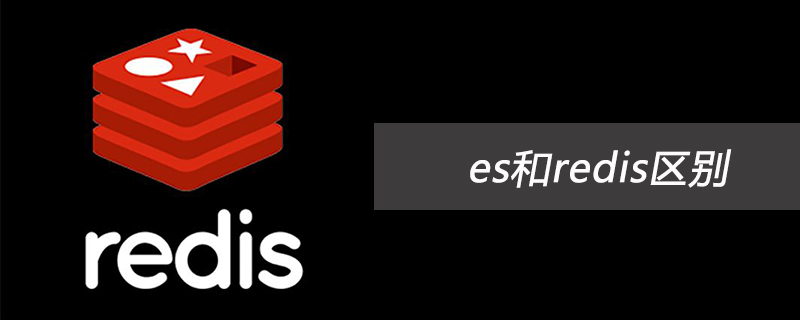Summary of common Redis commands: including time complexity summary and data structures used internally by specific data types;
Advanced functions of Redis: including persistence, replication, sentinel, and cluster introduction;
Understanding Redis: Understand memory and blocking; this part is very important. All the previously introduced techniques can be used as techniques, and this should be part of the Tao;
Development skills: mainly a summary of some practical development, Including cache design and common pitfalls.
Let’s start the first part and take another look at Redis.
The content of this series is based on: redis-3.2.12
Redis is not a panacea
During interviews, I am often asked to compare the advantages and disadvantages of Redis and Memcache. Personally, I think The two are not suitable for comparison. One is a non-relational database that can not only cache but also do other things, and the other is only used for caching. Redis is often used as a cache, which is the main reason why we often compare it to other technologies. So what can Redis do? What can't you do?
Redis can do anything
Caching, there is no doubt that this is the most well-known usage scenario of Redis today. It is very effective in improving server performance;
Ranking list. If you use a traditional relational database to do this, it will be very troublesome, but using the SortSet data structure of Redis can be very convenient;
Calculator/speed limiter, using the atomic auto-increment operation in Redis, we can count the number of user likes, user visits, etc. If MySQL is used for this type of operation, frequent reading and writing will bring considerable inconvenience. Pressure; A typical usage scenario of the speed limiter is to limit the frequency of a user's access to a certain API. Commonly used ones include rush buying to prevent users from unnecessary pressure caused by crazy clicking;
Friend relationships, using collections Some commands, such as intersection, union, difference, etc. It can easily handle functions such as mutual friends and common hobbies;
Simple message queue, in addition to Redis's own publish/subscribe mode, we can also use List to implement a queue mechanism, such as: arrival notification, Requirements such as email sending do not require high reliability, but will bring a lot of DB pressure. List can be used to complete asynchronous decoupling;
Session sharing, taking PHP as an example, the default Session is saved In the server file, if it is a cluster service, the same user may land on different machines, which will cause users to log in frequently; after using Redis to save the Session, the user can obtain the corresponding information no matter which machine he lands on. Session information.
What can't Redis do
Although Redis is rich in functions, it is not omnipotent. It is suitable for its specific fields and can get twice the result with half the effort. If abused, it may lead to system instability, increased costs and other problems.
For example, Redis is used to save basic user information. Although it can support persistence, its persistence solution cannot guarantee the absolute landing of data, and may also cause Redis performance to decrease because of persistence. Too frequently will increase the pressure on the Redis service.
A simple summary is that businesses with too large amounts of data and very low data access frequency are not suitable for using Redis. If the data is too large, it will increase costs, and the access frequency is too low. Storing it in memory is a waste of resources.

You always need to find a reason for your choice
The above mentioned some usage scenarios of Redis, so there are many other options for solutions to these scenarios, such as caching Using Memcache, session sharing can also be implemented with MySql, and message queue can be implemented with RabbitMQ. Why must we use Redis?
Fast speed, completely based on memory, implemented in C language, the network layer uses epoll to solve high concurrency problems, the single-threaded model avoids unnecessary context switches and race conditions; Note: single-thread only refers to the network The request module uses a request to process the client's request. Like persistence, it will reopen a thread/process to process
Rich data types. Redis has 8 data types. Of course, the main ones are commonly used There are five types: String, Hash, List, Set, and SortSet. They all organize data based on key values. Each data type provides a very rich set of operation commands, which can meet most needs. If you have special needs, you can also create new commands yourself through Lua scripts (with atomicity);

In addition to the rich data types provided, Redis also provides personalized functions such as slow query analysis, performance testing, Pipeline, transactions, Lua custom commands, Bitmaps, HyperLogLog, publish/subscribe, Geo, etc.
The code of Redis is open source on GitHub. The code is very simple and elegant, and anyone can understand its source code; its compilation and installation is also very simple, without any system dependencies; there is a very active community, various The client's language support is also very complete. In addition, it also has transaction support (not tried yet), persistence, master-slave replication and other functions, realizing the feasibility of high availability and distributed processing.

As a developer, the things we use cannot be made into a black box. We should go deep into it to understand and become more familiar with it.
The above is the detailed content of What are the usage scenarios of Redis?. For more information, please follow other related articles on the PHP Chinese website!
 es和redis区别Jul 06, 2019 pm 01:45 PM
es和redis区别Jul 06, 2019 pm 01:45 PMRedis是现在最热门的key-value数据库,Redis的最大特点是key-value存储所带来的简单和高性能;相较于MongoDB和Redis,晚一年发布的ES可能知名度要低一些,ES的特点是搜索,ES是围绕搜索设计的。
 一起来聊聊Redis有什么优势和特点May 16, 2022 pm 06:04 PM
一起来聊聊Redis有什么优势和特点May 16, 2022 pm 06:04 PM本篇文章给大家带来了关于redis的相关知识,其中主要介绍了关于redis的一些优势和特点,Redis 是一个开源的使用ANSI C语言编写、遵守 BSD 协议、支持网络、可基于内存、分布式存储数据库,下面一起来看一下,希望对大家有帮助。
 实例详解Redis Cluster集群收缩主从节点Apr 21, 2022 pm 06:23 PM
实例详解Redis Cluster集群收缩主从节点Apr 21, 2022 pm 06:23 PM本篇文章给大家带来了关于redis的相关知识,其中主要介绍了Redis Cluster集群收缩主从节点的相关问题,包括了Cluster集群收缩概念、将6390主节点从集群中收缩、验证数据迁移过程是否导致数据异常等,希望对大家有帮助。
 详细解析Redis中命令的原子性Jun 01, 2022 am 11:58 AM
详细解析Redis中命令的原子性Jun 01, 2022 am 11:58 AM本篇文章给大家带来了关于redis的相关知识,其中主要介绍了关于原子操作中命令原子性的相关问题,包括了处理并发的方案、编程模型、多IO线程以及单命令的相关内容,下面一起看一下,希望对大家有帮助。
 Redis实现排行榜及相同积分按时间排序功能的实现Aug 22, 2022 pm 05:51 PM
Redis实现排行榜及相同积分按时间排序功能的实现Aug 22, 2022 pm 05:51 PM本篇文章给大家带来了关于redis的相关知识,其中主要介绍了Redis实现排行榜及相同积分按时间排序,本文通过实例代码给大家介绍的非常详细,对大家的学习或工作具有一定的参考借鉴价值,希望对大家有帮助。
 实例详解Redis实现排行榜及相同积分按时间排序功能的实现Aug 26, 2022 pm 02:09 PM
实例详解Redis实现排行榜及相同积分按时间排序功能的实现Aug 26, 2022 pm 02:09 PM本篇文章给大家带来了关于redis的相关知识,其中主要介绍了Redis实现排行榜及相同积分按时间排序,本文通过实例代码给大家介绍的非常详细,下面一起来看一下,希望对大家有帮助。
 一文搞懂redis的bitmapApr 27, 2022 pm 07:48 PM
一文搞懂redis的bitmapApr 27, 2022 pm 07:48 PM本篇文章给大家带来了关于redis的相关知识,其中主要介绍了bitmap问题,Redis 为我们提供了位图这一数据结构,位图数据结构其实并不是一个全新的玩意,我们可以简单的认为就是个数组,只是里面的内容只能为0或1而已,希望对大家有帮助。
 一起聊聊Redis实现秒杀的问题May 27, 2022 am 11:40 AM
一起聊聊Redis实现秒杀的问题May 27, 2022 am 11:40 AM本篇文章给大家带来了关于redis的相关知识,其中主要介绍了关于实现秒杀的相关内容,包括了秒杀逻辑、存在的链接超时、超卖和库存遗留的问题,下面一起来看一下,希望对大家有帮助。


Hot AI Tools

Undresser.AI Undress
AI-powered app for creating realistic nude photos

AI Clothes Remover
Online AI tool for removing clothes from photos.

Undress AI Tool
Undress images for free

Clothoff.io
AI clothes remover

AI Hentai Generator
Generate AI Hentai for free.

Hot Article

Hot Tools

SublimeText3 Mac version
God-level code editing software (SublimeText3)

SAP NetWeaver Server Adapter for Eclipse
Integrate Eclipse with SAP NetWeaver application server.

Atom editor mac version download
The most popular open source editor

mPDF
mPDF is a PHP library that can generate PDF files from UTF-8 encoded HTML. The original author, Ian Back, wrote mPDF to output PDF files "on the fly" from his website and handle different languages. It is slower than original scripts like HTML2FPDF and produces larger files when using Unicode fonts, but supports CSS styles etc. and has a lot of enhancements. Supports almost all languages, including RTL (Arabic and Hebrew) and CJK (Chinese, Japanese and Korean). Supports nested block-level elements (such as P, DIV),

SecLists
SecLists is the ultimate security tester's companion. It is a collection of various types of lists that are frequently used during security assessments, all in one place. SecLists helps make security testing more efficient and productive by conveniently providing all the lists a security tester might need. List types include usernames, passwords, URLs, fuzzing payloads, sensitive data patterns, web shells, and more. The tester can simply pull this repository onto a new test machine and he will have access to every type of list he needs.






